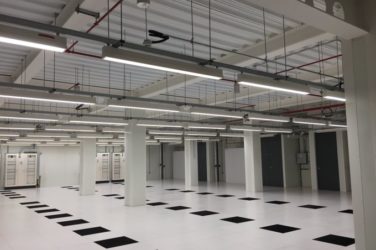Is there a profitable future in the co-location business?
Turn the clock back almost a decade and the exchanges were busy trying to find newer ways and places to conduct trading operations. Sure, there’d still be traders, algorithms and data but not in Manhattan – rather they’d all interact across the Hudson River and in a suburb of New Jersey. Think the exchange located in the Concrete Jungle goes to the home of the mall and backyard.
Say it isn’t so, Joe.

Brad Bailey, Celent
But it was. And other exchanges and companies created data centers and co-location facilities in other Garden State locales, such as Secaucus, Edison and Piscataway. Still other centers popped up in outside the New York/New Jersey metro area in Virginia, Illinois and Denver to name a few.
According to CBOE’s website, there are 2,424 colocation facilities nationwide. Is there room for more? And moreover, has the proliferation of these hubs been a worthwhile endeavor?
“Co-location was the first wave in a move from firms owning their own infrastructure. From a cost perspective it has been well worth the effort,” said Brad Bailey, Research Director, Securities and Investments Group at Celent. “Co-location has offered advantages in availability, disaster recovery, physical security, shared services. Some of the third-party data centers have become key locations in trading across asset classes.”
Is the co-lo business still booming?
“Data growth has accelerated and the move away from on-premise infrastructure continues,” Bailey continued. “Demand is very high for data centers strategically located near major trading centers globally.”
If 2010 was the first wave of co-location, then Bailey dubbed the present as the second wave of innovation and construction. The move into the cloud marks a delineation from physical spaces to the cyber realm.
“Firms are continuing to strategize on what infrastructure should be in house, collocated, and moved to the cloud,” he said.
The following is an abridged version of an article that appeared in the May 2010 edition of Traders Magazine
A Buttonwood Tree Grows in Mahwah
By Peter Chapman
It wasn’t simply a landscaping flourish or a nod to history that prompted NYSE Euronext executives to plant a group of buttonwood trees outside their massive new data center in Mahwah, N.J. this spring.
According to Wall Street lore, it was under a buttonwood tree–better known as the sycamore–that 24 brokers formed the New York Stock Exchange in 1792. By planting six of the trees in Mahwah, the exchange operator was, of course, paying its respects to its heritage. But also, and more significantly, it was signaling that a new type of market center was being born.
For more than 200 years, the building at 30 Broad and its predecessors were the center of trading, where brokers swarmed around specialists’ posts shouting out their buy and sell orders. But for the next 200, NYSE executives hope the building at 1600 MacArthur Blvd. in Mahwah will fill that role, with traders’ algorithms noiselessly interacting with the matching engines of its five equities and options exchanges.
For NYSE Euronext, the future is in co-location and being a “liquidity hub.”
The New York has always been a manager of liquidity hubs, of course. At 30 Broad, it provides four walls within which brokers can conduct their business. It provides the doors that let them onto the trading floor. It provides a specialist who controls the action. It provides booths, telephones, market data, order routing and order management systems. And, of course, it provides the electricity, heat, running water, food and bathrooms necessary to keep everyone comfortable.
Center of Universe
The building in Mahwah is just one more facility. But instead of a specialist, it has a matching engine. Instead of doors, there are FIX gateways. Instead of brokers, there are algorithms. Instead of booths, there are racks. There is still market data. There is still order-routing connectivity. There are even order management systems, in case traders need them.
For NYSE Euronext, Mahwah is the new center of the universe. There will still be traders on the floor at 30 Broad, but they will be interacting with a server in Mahwah.
To make the dream a reality, the company has charged its commercial technologies division, NYSE Technologies, with the task of bringing in the traders and their algorithms. As the NYSE did (and still does) at 30 Broad, NYSE Technologies will do in Mahwah: supply traders with market data, order routing and a place to hang their (digital) hats.
The group has responsibility for the 400,000-square-foot facility in Mahwah and an equally large one in Basildon, England. They cost $600 million.
“Our data centers are the trading floors of the future,” Stanley Young, chief executive of NYSE Technologies, told Traders Magazine. “The network electronically replicates the physical floor where people used to walk and talk.”
NYSE Technologies was put together last year by combining several disparate pieces of the NYSE Euronext global empire. Its mandate is to commercialize the parent company’s trading infrastructure properties in service of sellside, buyside and exchange customers. The group is essentially a rebranded NYSE Euronext Advanced Trading Solutions, a smaller in-house organization launched two years ago with a similar goal.
Behind the creation of these enterprises was management’s concern that NYSE Euronext’s traditional trading operations were under threat and the firm needed to diversify. NYSE Euronext had to invest in the technology to support its own markets, the thinking went, so why not market the technology to others? If NYSE Euronext was not going to be able to execute every trade, it should at least try to touch as many orders as possible. That philosophy underlies NYSE Euronext chief executive Duncan Niederauer’s vision for the future of his company.
“We are going to redefine what it means to be an exchange in the 21st century,” Niederauer told analysts recently. “It’s not just about the matching engine. The matching engine is a commodity.”
Clients’ Will
The bet is that many of those brokers who opt to outsource their data feeds and connectivity to NYSE Technologies will do so by co-locating their trading servers in Mahwah. That will give them the fastest access to NYSE Euronext exchanges. Orders earmarked for competitor exchanges will be routed via extranet.
Moving to the big data center is not a requirement, however. NYSE Technologies’ executives assert that they will manage infrastructure wherever the customer sees fit. That’s even if they want to co-locate in the data centers of NYSE competitors.
Young was previously chief executive of an NYSE Euronext joint venture called Atos Euronext Market Solutions (AEMS). The vendor provided technology services to NYSE Euronext’s European operations. Young joined NYSE Euronext when it acquired AEMS in summer 2008.
To make NYSE Technologies a viable competitor, Young must mold a grab bag of tech companies NYSE Euronext acquired in recent years into a cohesive whole.
In the U.S., that includes the old Securities Industry Automation Corporation (SIAC); the high-speed market data company Wombat Financial Software; FIX engine supplier TransactTools; order router NYFIX and AEMS. About 300 people work for NYSE Technologies in the U.S., Europe, Asia and Latin America.
Despite two years of effort, the organization is still in its infancy and the molding process is ongoing. There has been some flux in the executive suite, and the two data centers aren’t slated to come on line until later this year.
“It’s a work in progress,” Niederauer said at a recent conference for analysts. “We’ve acquired a few assets. We haven’t put them together yet as we would like.” Young expects the group to be in fighting shape by the end of the year. “The message is still embryonic,” he said. “But the trajectory is the right one. We have to get our data centers up and running. By the end of the year we will be in such a strong position, I will be comfortable taking on all comers.”
Predecessor group NYSE Euronext Advanced Trading Solutions was launched in 2008 shortly after the firm bought Wombat. ATS was co-headed by Wombat CEO Danny Moore and TransactTools CEO Sam Johnson. Both men have since left the firm, Johnson in 2008 and Moore just last month. Moore acted as NYSE Technologies’ chief operating officer for the last year or so.
Supporting Young is a mixture of old NYSE hands and new hires. His chief technology officer is Don Henderson from NYFIX. His head of research and development is Conor Allen, from Wombat. Young also works closely with NYSE Euronext CTO Steve Rubinow, whose main focus is the Mahwah data center.
As for the three business units, Young looks to longtime NYSE employee Mark Schaedel to run market data. Market data sales is by far the biggest contributor to NYSE Technologies’ revenues. It accounted for nearly half of the group’s total revenues of $368 million in 2009. Most of that came from the distribution of NYSE Euronext data. The plan is to bring all the market data from about 150 exchanges worldwide into its data centers for onward distribution to traders’ algorithms or black boxes.
Key U.S. employees for infrastructure include Ken Barnes from Wombat and Don Brook from Radianz, who jointly run the co-location business. Tony McManus, formerly in charge of algorithmic trading software at Wombat, runs enterprise solutions. Key services include a large extranet known as SFTI (pronounced “safety”) that was the centerpiece of SIAC, and co-location.
The breadwinner for now is SFTI. The nine-year-old network shuttles market data, orders and trade reports between brokers and exchanges and, with last year’s acquisition of NYFIX, brokers and money managers. The group brought in $136 million last year, or 37 percent of the total.
NYFIX Benefit
Finally, Bob Moitoso runs the transaction solutions division. Industry veteran Moitoso has spent much of his career facilitating communication between the sellside and the buyside. He joined with the NYFIX deal. Bruce Boytim and Dan Romanelli, formerly of Merrill Lynch, are responsible for the risk management gateway. The group is the smallest of the three, contributing only 14 percent of revenues, but includes at least two valuable trading products: a risk management gateway-now an imperative with new SEC rules surrounding risk management likely–and NYFIX.
The $368 million NYSE Technologies took in last year was 15 percent of total NYSE Euronext net revenues. The division is the least profitable of NYSE Euronext’s three divisions–the other two are cash equities and listings and derivatives–accounting for only 5 percent of the firm’s operating profits.
“There is no revenue flow yet,” Dominique Cerutti said at NYSE Euronext’s Investor Day conference in March. Cerutti is the head of all technology at NYSE Euronext-and Young’s boss. “We are still building the company. That’s the reason for the margins.”
Still, NYSE executives predict the group will be the fastest growing of the three businesses, reaching $1 billion in sales in four to five years. Cerutti expects operating margins to grow from 13 percent presently to 30 percent over that period.
Underlying these projections are expectations that brokerages will pull back from their commitments to trading infrastructure. Due to the expense and time-consuming nature of managing infrastructure, NYSE Technologies is predicting a wholesale switch to outsourcing.
Rather than maintain potentially hundreds of data feeds and networks connecting them to market centers and their customers, brokers will pay NYSE Technologies to do it for them.
For the full article, click here.






